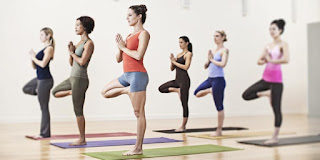Green tea is so good for you that it's even got some researchers raving.
"It's the healthiest thing I can think of to drink," says Christopher Ochner, PhD. He's a research scientist in nutrition at the Icahn School of Medicine at Mount Sinai Hospital.
Of course, no one food will protect you from disease. Your health is wrapped up in your lifestyle and your genes, so even if you drink green tea all day long, you also need to take care of yourself in other ways, like not smoking, being active, and eating a healthy diet.
Green tea’s biggest benefit? "It's all about the catechin content," says Beth Reardon, RD, a Boston nutritionist. Catechins are antioxidants that fight and may even prevent cell damage. Green tea is not processed much before it's poured in your cup, so it's rich in catechins.
Green tea has been shown to improve blood flow and lower cholesterol. A 2013 review of many studies found green tea helped prevent a range of heart-related issues, from high blood pressure to congestive heart failure.
What’s good for the heart is usually good for the brain; your brain needs healthy blood vessels, too. In one Swiss study, MRIs revealed that people who drank green tea had greater activity in the working-memory area of their brains. Green tea has also been shown to help block the formation of plaques that are linked to Alzheimer's disease.
Green tea seems to help keep blood sugar stable in people with diabetes. Because catechins lower cholesterol and blood pressure, they can help protect against the damage a high-fat diet can cause, Ochner says.
Sorry, but no drink or food melts the pounds off. While some evidence suggests that the active ingredient in green tea, EGCG, may help you drop a few pounds, other studies show no effect.
But green tea is a smart swap for sugary drinks.
"All things being equal, if you sub 1-2 cups of green tea for one can of soda, over the next year you'd save over 50,000 calories," Ochner says. That's more than 15 pounds. Just don’t swamp it with honey or sugar!
Studies on green tea’s impact on cancer have been mixed. But green tea is known to aid healthy cells in all stages of growth. There are some clues that green tea may help destroy cancer cells, but that research is still in its early stages, so you shouldn’t count on green tea to prevent cancer. In fact, the National Cancer Institute's web site says it "does not recommend for or against the use of tea to reduce the risk of any type of cancer."
Sipping tea helps you slow down and relax, Reardon says. A natural chemical called theanine found in green tea can provide a calming effect.
But perhaps the biggest benefit, which you get right away, is just taking a tea break. Here’s how to make your next cup:
- Don't add green tea to boiling water. It's bad for catechins, those healthy chemicals, in the tea. Better: 160-170 degree water.
- Add lemon. Vitamin C makes the catechins a easier to absorb. Dairy, on the other hand, makes it harder to absorb them.
- Nutrient levels in green tea can vary. Pricier teas usually have more, and canned green-tea drinks generally have less.









